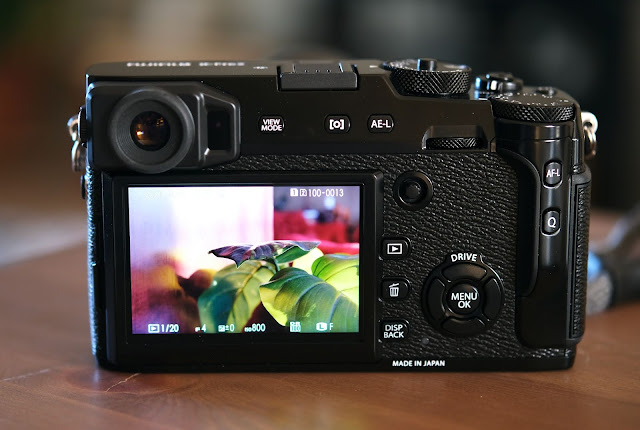One of the most distinctive features regarding the use of the Fujifilm X-Pro2 camera model, it is certainly its mechanical style approach which is illustrated by many analog style controls or dials. Many basic functionalities are present such as ISO adjustment, shutter speed and exposure correction dials, aperture and focusing rings, viewfinder option front lever as for auto/manual focus control dial. Even the presence of a shutter release button with a screw-in cable release option is typically a reminiscence of the traditional analog film camera era.
Analog control dials are usually by stepped one-stop exposure value graded, compared to the more precise stepless electronic adjustment. This can be observed with the shutter speed scale, the aperture ring setting, and the ISO selector. And the convenience to set manually those dials is by forcing the photographer to get a better comprehension of the parameter choices in relation with the subject and its context. Automation often induces a less attention to the effect of the configuration used to photograph. Moreover, it is easier to directly set a particular parameter without working through control dials or buttons that are only reflected by viewfinder/live view info’s.
There is a bit of controversy about the utility of using an optical viewfinder (OVF) knowing that an electronic viewfinder (EVF) will deliver you a good preview of your final picture result. But EVF had proven to be more tiring for the eye of the photographers. An optical viewfinder in these digital days is offering a bit of a relief from all those electronic screens that are a constant part of your life even if you consider the less reliable framing accuracy of some OVF. Using an OVF is also a good way to measure how your film simulation bias are altering the "raw" picture rendering in terms of color, contrast, dynamic, etc. It may force you to reconsider that special image sensor configuration aspect.
Analogue control dials and rings don't mean that there is a mechanical link between them and the material functionality of the camera. For sure we understand most of those adjustment is done electronically ("by wire") and we cannot compare an electronic Fujifilm X-Pro2 to an almost complete mechanical parametric system like the Leica M (if you except the image sensor part).
Many Fujifilm X-Ts, X-H and X-Pro’s products have this mechanical feeling that characterize their series for years now. Beginning in 2012 with the introduction of the original X-Pro1, Fuji is now offering an impressive and expanded line of camera models and various X-mount lenses. Most of them respect the analog style presentation but as time is passing by, some of the most recent Fuji X-mount models such as the X-S10 have now adopted the standard electronic multi-function dial/push-button trend, and there are sensitive economical and industrial good reasons to do so.
If you like to do photograph in a simple manner but you still want to participle directly to the selection of the fundamental picture parameters, the Fujifilm X-Pro2 is certainly a strong camera choice to do so. Even though all automation versatility is present on the X-Pro2 and are reliable if you need to use them, on the other hand, you can configure, one by one, an exposure bias or a focusing zone of your choice that will open a different pictorial interpretation of your subject and its context. There are your image sensor configuration (JPEG film simulation or RAW), your sensor sensibility (ISO quality), your shutter speed (movement control), your lens aperture (deep of field), your focus point and, eventually, your exposure correction. Most of them have a direct control dial access and you can go further with all the menu functionalities or the other function push buttons like the white balance (picture temperature Kelvin control), the autofocus behavior, etc.)
Since the emergence of the digital photography, we have seen the reintroduction of the two camera design historical trends, i.e. the off-lens axis viewfinder (à la rangefinder) and the centered ones (à la single lens reflex or D-SLR). Each school has his/her supporters. Off-lens-axis viewfinders allow generally to stay more discrete in front of the subject, in looking less serious or as a pro-type of photographer, more face-to-face generous contact which is an advantage when you are looking for more spontaneous photography. The camera body design is often more slick, less bumpy although it will signify a less secure hand holding. At the end the virtues of each viewfinder type depend what kind of use the photographer will do with the camera.
Last remark regarding the Fujifilm X-Pro2 is its ability to be able to pre-select faster basic parameter without looking to the camera viewfinder/live-view. Getting an intuitive technical photographic approach save more time to look to the subject in its context with your naked eye and increase your ability to search and find different angles of view or to anticipate the scene time and space development. In that sense, the Fujifilm X-Pro2 is a very creative photographic tool.
More about the Fujifilm X-Pro2












